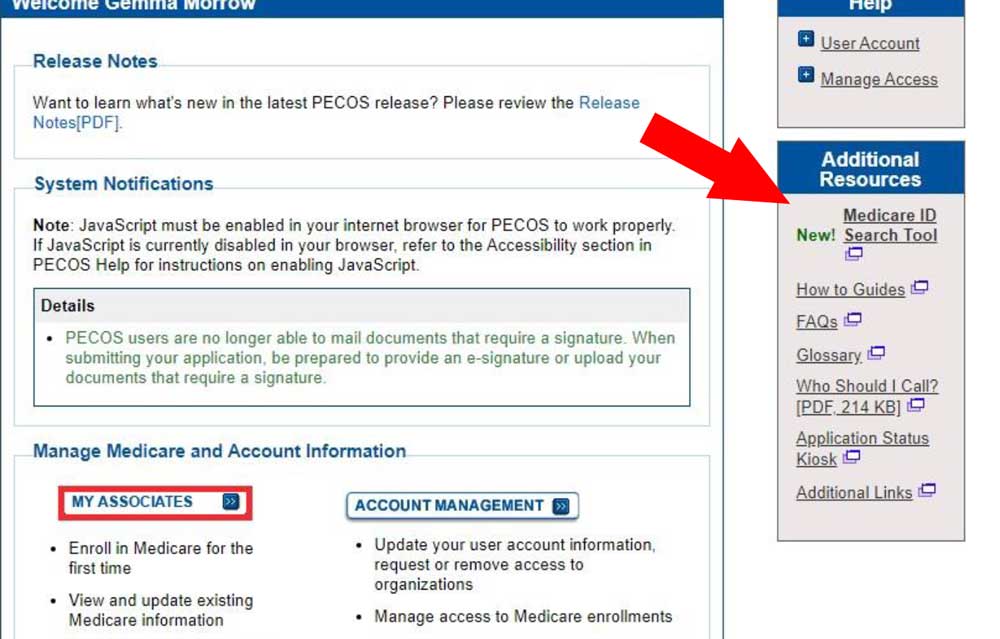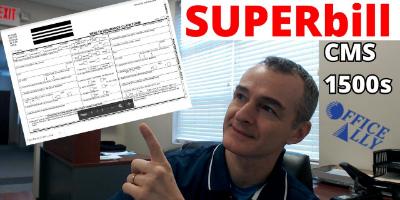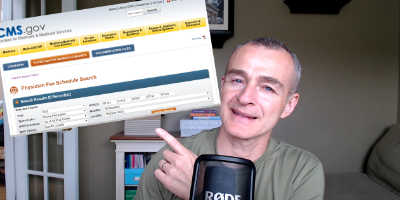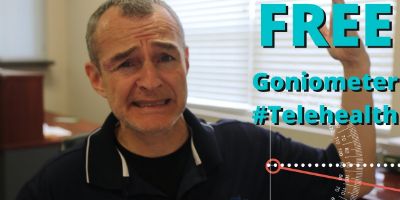What is a PTAN?
PTAN is short for Provider Transaction Access Number
A PTAN is a Medicare-only provider number. It is sometimes also referred to as a Medicare provider identification number.
PTANs are Medicare ID numbers issued to Medicare contracted physical therapists in private practice, occupational therapists in private practice, and speech-language pathologists.
PTAN Lookup Options
- Use PECOS PTAN Lookup Tool – Provider Enrollment, Chain, and Ownership System
- Notification Letter – When you were originally contracted with your Medicare MAC you would have received an official letter containing your personal Medicare PTAN.
Can A Therapist Find His/Her Own PTAN?
The best method for a physical therapist to find his/her Medicare provider number is to use the PECOS PTAN Lookup Tool.
Can An Employer Look Up A Therapist’s PTAN?
Yes, but you would need to establish a connection between the employer’s Medicare Identity and Access account and the therapist’s account. Then that therapist would grant the employer access to PECOS.
WARNING: No therapist should ever share login and password information with an employer.
Can a Patient Find a Physical Therapist’s Medicare PTAN?
No. A patient is not able to look up a physical therapist’s Medicare PTAN. If patients use the Medicare Physician & Other Practitioner Look-up Tool to search for Medicare providers by name or NPI the provider will show up as a Medicare contracted provider, but the therapist’s PTAN will not be visible to the patient.
Another way for patients to confirm a physical therapist is a Medicare contracted provider is to use the Medicare provider search tool. This tool allows patients to search by location and name for Medicare providers. Again, this tool does not show a therapist’s Medicare PTAN. The tool only shows the therapist’s contact information and only Medicare contracted therapists are listed on the tool.
Medicare Provider Number Lookup Tool for Physical Therapists
Below are the steps to find a PTAN (Medicare provider number) if you are a physical therapist, occupational therapist, or speech-language pathologist contracted as a Medicare Part B provider.
Step 1 – Start the PTAN Lookup by logging into PECOS:
Click here to access the PECOS website.
If you do not already have a PECOS account first create a Medicare I&A account then create your PECOS account.

Step 2 – Click the NEW Medicare ID Search Tool:
Look at the top right part of your screen. You will see an image that matches the image below.
Click the link indicated by the red arrow.

Enter your name and NPI as indicated. You will get a list of all active PTANs.
Alternative Method to Find A Therapist’s PTAN
Another way to find your PTANs is to go to My Associates and Enrollments and click the link that says “View/Manage Reassignments”.

Step 3 – Cancel Old Medicare Reassignments:
Once you have secured your existing PTAN or PTANs you will want to check your existing reassignments.
When a physical therapist, occupational therapist, or speech-language pathologist is employed by a private practice, that therapist is required to reassign Medicare benefits to the employer.
Once you have terminated that employment either you or the previous employer should deactivate and cancel the existing reassignment.
It is ultimately your responsibility to ensure your reassignments have been terminated.
Watch the video below for more information on finding your Medicare PTAN.
Step 4 – Update your contact information.
The last time someone completed a reassignment application for you that person likely had to enter his/her contact information.
Take a moment and go into your enrollment. Scroll down to contact information and remove anyone you do not want to have access to your enrollments.
From Noridian:
“A PTAN is a Medicare-only number issued to providers by Medicare Administrative Contractors (MACs) upon enrollment to Medicare. MACs issue an approval/notification letter, including PTAN information, when enrollment is approved.
PTAN and NPI Relationship
While only the National Provider Identifier (NPI) is submitted on claims, the PTAN is a critical number directly linked to a provider or supplier’s NPI. A PTAN’s use should generally be limited to a provider’s communication with their MAC.
Multiple PTANs for Different Practice Locations May be Appropriate
Noridian may determine and issue more than one PTAN depending only upon the reasonable charge locality of your practice locations. Unless the reasonable charge locality changes, additional PTANs will not be assigned.
Provider Not Eligible for a Medicare PTAN
Requests for a “denial only letter” are no longer accepted. Providers that are not eligible for a Medicare number must have the beneficiary submit the CMS-1490S form This link will take you to an external website…
Inactive PTANs are Deactivated
Medicare is mandated by CMS to deactivate PTANs not being used. The deactivation process occurs every month. A provider’s PTAN is deactivated when he or she has not billed the Medicare program for four consecutive quarters. A PTAN is given an end date when it is deactivated, meaning claims can get submitted prior to the end date within a year of the service date.
Find my PTAN
There are two options to find a provider PTAN.
1. Notification Letter: The MAC will issue a notification/approval letter with the PTAN once the Provider’s enrollment is approved.
2. Provider Enrollment, Chain, and Ownership System (PECOS): PECOS is the most efficient way to find a PTAN. Follow these simple steps to find PTANs in PECOS.
Log into Internet-based PECOS
Select “My Associates” on the PECOS home page
Select “View Enrollments” by an applicable individual or organizational enrollment
Click on “View Medicare ID Report”
PTAN or PTANs are listed in the Medicare ID column” – Link

How to create a superbill for cash based therapy, out of network claims Office Ally Practice Mate
The CMS 1500 form is the gold standard for superbills. If you are giving cash based clients a superbill or helping clients submit out of network claims this tutorial will walk you through the entire process from start to finish for using a FREE Practice Mate account to create and print a CMS 1500.

Medicare Physical Therapy Claim and Reimbursement Analysis – How to create a profitable practice
Medicare reimbursement for physical therapy has been on the decline for several years now and with the proposed reductions coming in the next year physical therapy clinic owners are looking for new business models. The way it has always been done isn’t going to bring you success in your physical therapy practice moving forward.

How much does medicare part b pay for physical therapy
If you want to learn how to look up the Medicare CMS Physician Fee Schedule for 2020 and specifically for physical therapy, occupational therapy, or speech language pathology, WATCH THIS VIDEO.

Telehealth – Using ScreenCapture, Canva, and A Digital Goniometer To Measure ROM (FREE)
Telehealth for physical and occupational therapy has been growing in popularity lately. Along with this growth, therapists are looking for new and easy to use tools. This simple goniometer can be added to your screen capture to measure joint range of motion.

Medicare Guidelines for Billing Therapeutic Exercise 97110 PT, OT in 2020
“Many therapeutic exercises may require the unique skills of a therapist to evaluate the patient’s abilities, design the program, and instruct the patient or caregiver in safe completion of the special technique. However, after the teaching has been successfully completed, repetition of the exercise, and monitoring for the completion of the task, in the absence of additional skilled care, is non-covered. For example, as part of the initial therapy program following total knee arthroplasty (TKA), a patient may start a session on the exercise bike to begin gentle range of motion activity. Initially the patient requires skilled progression in the program from pedal-rocks, building to full revolutions, perhaps assessing and varying the
seat height and resistance along the way. Once the patient is able to safely exercise on the bike, no longer requiring frequent assessment and progression, even if set up is required, the bike now becomes an “independent” program and is no longer covered by Medicare.”

